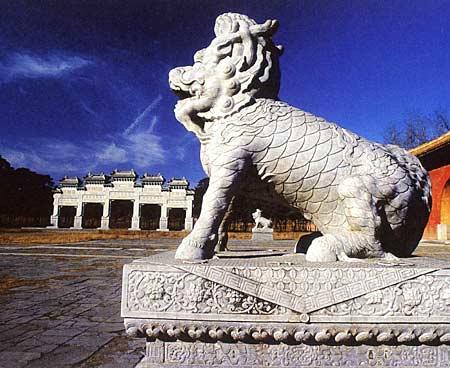
 |
| Mausoleum of the Ming and Qing Emperor (CNTV) |
Date of Inscription: 2000
Watch Video: Imperial mausoleums of Ming and Qing dynasties
Evaluation of the World Heritage Committee
According to the geomantic theory, the Mausoleum of the Ming and Qing Emperor was well selected, and a large number of buildings were cleverly placed underground. It is a product of human beings changing nature and reflects traditional architecture and decoration ideas and explains the view of the world and the idea of the right lasting for over 500 years in feudal China.
Chinese Name: Ming Qing Huang Jia Ling Qin
English Name: Mausoleum of the Ming and Qing Emperor
According to the cultural and natural heritage selection criteria C(I)(III)(VI), C(I)(III)(IV)(V)(VI) and C(I)(III)(IV)(V)(VI), the Mingxian Tomb, the Eastern Qing Tombs and the Western Qing Tomb were included in the World Heritage List in 2000 and in 2003, the Ming Xiaoling Mausoleum and the Ming Tombs were also included in the World Heritage List.
The feudal dynasties of the past in China all promoted "an elaborate funeral to demonstrate filial piety" and viewed death as important as birth. Therefore, before they died, the emperors would spend a great deal of financial and human resources to build huge mausoleums. These mausoleums are a concentrated reflection of these emperors' belief in souls during the Chinese feudal period and embody the political ideology, moral values and aesthetic standard in every different period. At the same time, the mausoleums built by the national financial resources also reflect the economy, science and technology and the technological level at that time, and are the highest form of funerary art and architecture in China. The mausoleum buildings are important parts of ancient Chinese architecture and are unique due to the impact of the mentioned factors.

















 Rainstorms flood more than 10,000 cars in underground garages in Wuhan
Rainstorms flood more than 10,000 cars in underground garages in Wuhan


![]()
